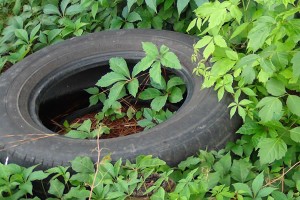What is dry steering?
Dry steering is turning the steering wheel of a vehicle whilst the vehicle is stationary. Most modern cars have power assisted steering, making dry steering relatively easy. Dry steering in a car without power assisted steering often requires significant effort in order to turn the wheel.
Is dry steering bad for your car?
Dry steering is not recommended as it is potentially damaging to front tyres and the car. Due to the car being stationary, you are essentially ‘tearing’ the tyres against the rough surface of the tarmac as you turn the steering wheel. This can scrub your tyres or potentially cause ripping of the rubber if small stones are embedded within the tarmac.
If you have ever tried to dry steer a car without power assisted steering, you will appreciate how much force and load is placed on the steering columns/racks, bearings and other steering components. This can be demonstrated somewhat by trying to steer your car whilst stationary and without the engine running as power assisted steering requires the engine to be running to function.
Dry steering may appear relatively easy with power steering, though unnecessary force is still being applied to the steering components, it’s just the power steering doing all the work, making it appear light work to the driver.

Modern, well-built cars have structural components that are strong and in general, will not see a detrimental effect of dry steering providing it’s not carried out regularly.
Dry steering may be almost unavoidable in certain conditions such as manoeuvring out of a very confined area – being parked between two cars for example. Caution should be advised whilst manoeuvring away from a parked position.
If a front wheel is close to a kerb, turning the wheels (or dry steering) may force one of the wheels against the kerb whilst steering away from the kerb. this causes huge force on the sidewall of the tyre, the wheel and the steering components, though with the aid of power steering, little will be noticed by the driver. Dry steering is a bad driving habit that is generally best avoided due to potential problems that may occur.
Is dry steering allowed on the driving test?
Dry steering doesn’t directly put the safety of the car occupants, other road users or pedestrians a risk and therefore it is an ‘acceptable bad habit’ on the driving test. If you really are dry steering to excess during the driving test and thoroughly going to town on ripping up your tyres, you may receive a minor fault from the driving examiner, more so that they can explain to you the potential issues associated with such bad driving habits.
Dry steering may typically occur during one of your manoeuvres either whilst learning to drive, or during the driving test. The four possible manoeuvres are:
Dry steering may also occur whilst attempting to move off at an angle from behind a parked vehicle. How much you dry steer depends on how you are taught to drive. Some driving instructors do not regard dry steering as much of an issue, whilst others discourage such actions even before they have begun.
avoiding dry steering
If at all possible, always try to keep your car moving whilst steering. Even if moving very slowly (creeping) by use of clutch control, or slowly rolling (providing you keep control with the footbrake) will help to reduce tyre damage.
Further information related to steering
- Steering a car – The correct technique for steering a car during driving lessons and the driving test.
what is the againts actions on dry steering, ple, explain,………..
Hello Sasntha,
Dry steering can tear the tyre rubber that is in contact with the road surface. How much damage it does depends on how rough the surface is that’s in contact with the tyre.
I won an argument thanks to this…. thank you 😀
Glad to have helped 🙂
I failed the exam because of dry steering during my turn in the road maneuver.. Do you think I can contest that
Hello Zee,
You shouldn’t fail for dry steering. Dry steering might not do your tyres much good but it’s not something that I’ve known to fail a test.
I would say thia dry steering is bad, even if the vehicle has power steering…Cause it exhibits unnecessary force on the steering system and tyres…Even if you have power steering, the rack and other steering parts still feal excess force during dry steering…So please avoid it…
At a driving test, depends on the examiner…If he thinks that dry steering is wrong, its wrong…We cant oppose that…Cause dry steering is not recommended while you learn to drive, in the driving lessons…As per my knowledge…